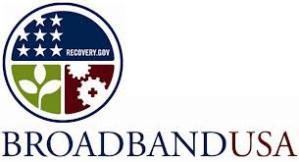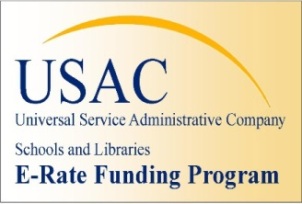 The National Telecommunications and Information Administration’s $4 billion Broadband Technology Opportunities Program (BTOP) has helped about 20 percent of U.S. libraries make improvements to publicly available technology resources and digital literacy within their communities, according to a report released on Monday by the American Library Association’s (ALA) Office for Information Technology Policy (OITP).
The National Telecommunications and Information Administration’s $4 billion Broadband Technology Opportunities Program (BTOP) has helped about 20 percent of U.S. libraries make improvements to publicly available technology resources and digital literacy within their communities, according to a report released on Monday by the American Library Association’s (ALA) Office for Information Technology Policy (OITP).
Funded by the American Recovery and Reinvestment Act of 2009 stimulus package, BTOP has helped increase broadband Internet access and adoption nationwide, and many of its beneficiaries have considered programs launched by BTOP a success. For example, in Colorado, more than 367,000 of the state’s citizens increased their digital literacy skills through programs launched with the help of BTOP funding. Of people who participated in formal digital literacy courses, 95 percent said that they had learned a valuable skill and would recommend the classes to others, according to the report. The New York State Libraries hosted “Broadband Express @ your Library” programs that helped 600 people secure employment using online job resources available at their local library.
Meanwhile, Alaska, Delaware, Maine, Oklahoma, and Rhode Island have established new videoconferencing capabilities in libraries, providing a vital link for rural communities. The Maine State Library is already using videoconferencing for its Volunteer Lawyers Project, for example, offering real-time legal advice to patrons in rural locations.
Yet as part of the 2009 stimulus package, BTOP was a one-time program.
“The majority of libraries that are involved with the BTOP project for improving their computing centers are now trying to figure out how to sustain the investments that have been made,” OITP Assistant Director Marijke Visser told LJ.
Many of these libraries plan to sustain these projects using funding from the Schools and Libraries Program of the Universal Service Fund, more commonly known as E-Rate. Fortunately, the Universal Service Fund, administered by the Federal Communications Commission (FCC) since its creation in 1997, does not use appropriated funds, so unlike many government programs, E-Rate is not in jeopardy from the budget sequestration. Unfortunately, the fund is currently capped, while demand for publicly available technology and broadband access is growing rapidly.
 “We know already in the last funding cycle that [in] some states, the amount that they requested for Internet connections really jumped—more than doubled in many of the states, because [libraries] made all these connectivity improvements through BTOP projects,” Visser said. “And that’s going to continue. We don’t want to go backwards now that they have … more computers or better access stations.”
“We know already in the last funding cycle that [in] some states, the amount that they requested for Internet connections really jumped—more than doubled in many of the states, because [libraries] made all these connectivity improvements through BTOP projects,” Visser said. “And that’s going to continue. We don’t want to go backwards now that they have … more computers or better access stations.”
Many patrons already view public broadband access as one of the most important services offered by public libraries. A recent survey by the Pew Internet Project found that 77 percent of Americans ages 16 and older say that free public access to computers and the Internet is “a very important service” offered by libraries. By comparison, 80 percent said that offering books for borrowing was a very important service.
Current FCC leadership is aware of this emerging challenge, and ALA praised FCC Commissioner Jessica Rosenworcel for calling for multiple enhancements to E-Rate during an FCC oversight hearing in April. Citing several specific examples of successful programs funded by E-Rate, she noted that when the program was launched, only 14 percent of United States schools had Internet access, whereas more than 95 percent of classrooms are now connected.
“Impressive! But laurels are not good resting places,” she told the committee. “Because great programs do not thrive without continuous reassessment and support. Already, year-in and year-out, the demand for E-Rate support is double the $2.3 billion the Commission now makes available annually. Moreover, the agency’s own survey indicates that 80 percent of schools and libraries believe that their broadband connections do not meet their current needs.”
Visser said that ALA and the OITP were pleased that Rosenworcel emphasized protecting the program, even as she expressed the need to review E-Rate to ensure it continues to meet the future needs of libraries and schools.
“Even though she’s calling for E-Rate 2.0, she made reference to the fact that we do want to protect the current program,” Visser said. “So not just shake it up for the sake of doing something new, but really look carefully at what has worked in the program, and then look at future needs.”



Visser said that ALA and the OITP were pleased that Rosenworcel emphasized protecting the program, even as she expressed the need to review E-Rate to ensure it continues to meet the future needs of libraries and schools.